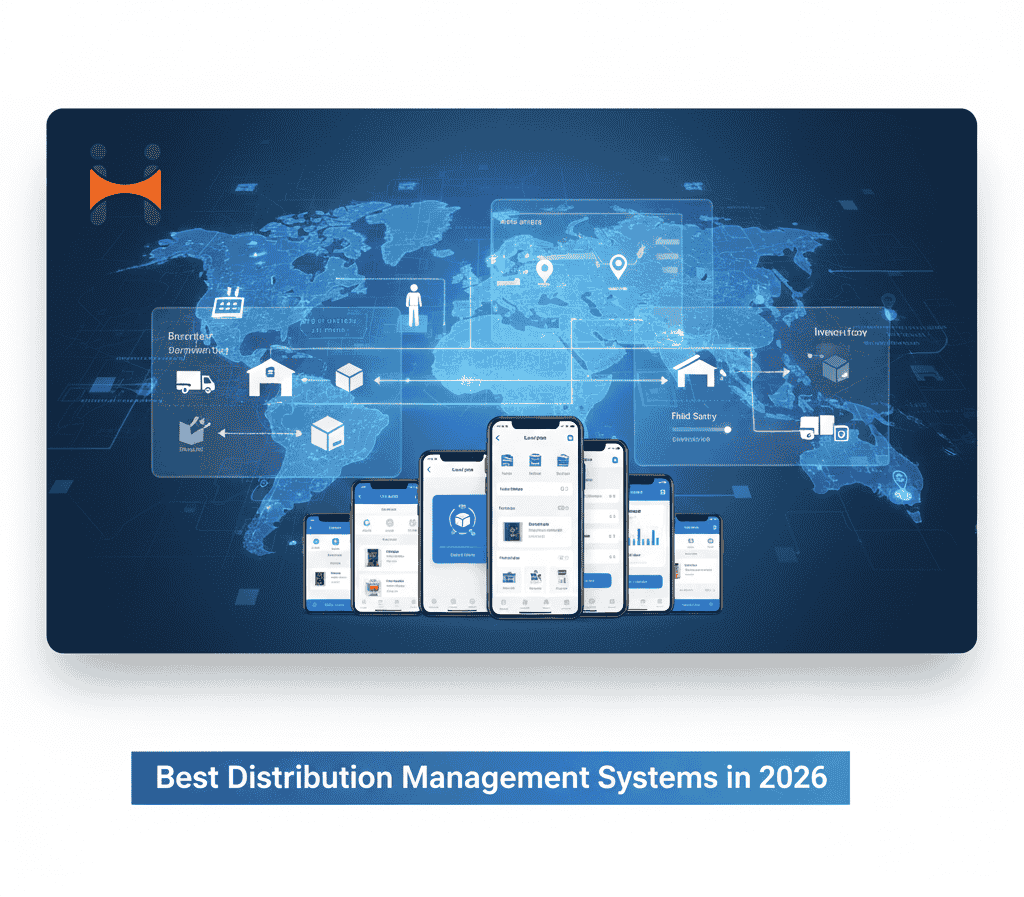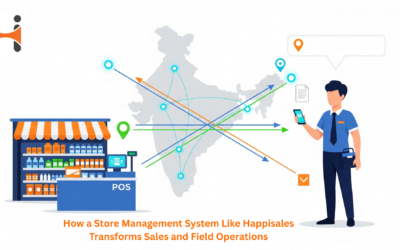Best Distribution Management Systems in 2026

Companies with wide sales networks need a system that keeps field activity steady. They handle orders, stock movement, outlet visits and daily reporting. Manual work slows everything. Errors grow. Teams spend more time fixing problems than doing real work. A strong distribution management system brings order. It gives a clear view of what is happening in the field and who is doing the work.
We meet many teams with the same struggle. Some use old tools that crash or never sync. Some depend on sheets that get messy. Some still operate fully on calls and paper. They only want something that works without effort and lets them follow daily progress.
A good distribution management system connects every part of the chain. Managers know where the field team is. Executives know what to do next. Information moves without confusion.
This guide lists the best options for 2026 and explains why many companies now look for clean field workflows and an employee location tracking app to keep work accountable.
What a Distribution Management System Should Solve in 2026?
Companies follow the same set of daily needs. They want simple movement of data and smooth work for both office and field teams.
• Smooth order flow
• Clear stock visibility
• Track of routes and outlet visits
• Customer history in one place
• Real time field sales tracking
• Reports that load fast
• Use on mobile with weak or no network
Most companies want a tool that stays out of their way and gets the job done.
Why Distribution Management Systems Matter Today?
Distributors handle hundreds of outlets. They face route issues, stock gaps, collections and pricing changes. Without a strong system, mistakes add up. Wrong dispatch. Missed visits. Lost proofs. Managers lose clarity and the team feels pressure.
A strong system keeps the workflow steady. Field executives follow the plan. Managers guide teams with clear data. Companies grow without daily confusion.
Top Distribution Management Systems in 2026
These systems stand out for stability, ease of use and practical field behavior. They support distribution, tracking and clean reporting.
Happisales
Happisales brings field force automation software and distribution functions into one app. Many companies shift to it for its ease of use. Orders, collections, service visits and stock details move smoothly between office and field. Executives see tasks, follow routes and finish visits without confusion. The app works offline and sends alerts when work is missed. Managers see the exact route taken by each executive.
Reports are simple and clear. Teams understand targets. Managers see which areas need support. Customers who shift from older systems say this is the first time their team feels calm using a tool. That comfort improves adoption.
Pepupsales
Pepupsales focuses on field visits and tracking. Companies that want to follow movement patterns choose this tool. It handles orders, outlet visits and activity logs. Managers see the team’s movement and work progress. It suits companies that want simple behavior without extra layers.
SalesDiary
SalesDiary suits brands that manage wide networks. It supports beat planning, order taking and scheme tracking. Dashboards show performance gaps in a simple way. Companies that want structured daily plans often choose this tool.
Bizom
Bizom is popular among FMCG brands. It covers primary and secondary sales and stock in hand. It also helps teams plan outlet coverage. Companies that want strong analytics and tight reporting often pick Bizom. It fits well within FMCG distribution software needs.
FieldAssist
FieldAssist blends field sales work and distribution features. It handles order collection, retailer engagement and sales tracking. Insights help managers plan their next steps. The app is steady and syncs cleanly.
DeltaSalesApp
DeltaSalesApp supports attendance, orders, route planning and expenses. Many small and medium companies choose it because it is easy to start and does not feel heavy. It works well for basic distribution needs.
XRetail
XRetail gives real time dashboards and clear outlet-level details. It helps teams watch stock movement and order patterns. Companies that want tight control of the distribution chain often choose XRetail.
Zinfi DMS
Zinfi supports channel partners, stock visibility and communication between partners. It suits brands that handle both distributor and retailer relationships.
What Matters When Choosing a Distribution Management System in 2026?
Many teams choose software too fast. After watching companies switch tools multiple times, the real concerns are always simple.
• Will the field team use it every day
• Can someone finish tasks in a few taps
• Does the data stay clean
• Does the app work with weak network
• Does it show the real path taken by each executive
• Can the office team get reports without asking anyone
Daily behavior decides success. A tool only helps when the smallest task works smoothly.
Why Location Tracking Matters Now?
Most companies now ask for one core feature. They want to know where their team is during work hours. They want proof of visits. They want clean logs of travel and time spent in the field.
An employee location tracking app gives this clarity. It helps managers plan better. They guide executives who go off route. They cut travel waste. They understand which areas need more focus.
Teams benefit as well. They do not have to explain their day. The system records it.
From my own work with teams across retail and FMCG, the pattern is clear. Once proper tracking starts, field discipline improves. Executives follow routes. Managers work calmly with data. The field feels predictable again.
This is also where beat management software supports teams. It keeps routes structured and reduces guesswork.
How a Distribution Management System Supports Field Productivity?
A strong system fixes small issues that slow field teams. Tasks reach the right person at the right moment. Executives get reminders. Routes form based on outlet locations. Customer history appears before a visit. Orders sync quickly. Managers stay updated without calls.
When these pieces fall into place, teams regain focus. They avoid switching between apps. They stop waiting for approvals. They spend more time selling.
Advantages of Using a Modern Distribution Management System
Companies that pick a clean system see gains early.
• Higher outlet coverage
• Fewer manual errors
• Real time field visibility
• Better customer engagement
• Faster reporting
• Smoother work for all teams
• Steady and predictable growth
These improvements show up within the first few months.
The Role of Mobile Performance
A distribution management system is only useful if the mobile app works well. Field teams work in areas with weak networks. They need the app to work offline, load fast and stay simple.
Many systems fail here. They look fine on laptops but slow down on mobile. This creates frustration and blocks adoption. Companies that test mobile behavior before choosing a system avoid many problems later.
Why 2026 Systems Will Look Different?
New systems will be cleaner and smarter. They will reduce manual entry. They will follow patterns and guide the next step. Field teams will save time because the tool will remove repeated work. Companies that choose flexible tools now will adjust faster to these changes.
Where Happisales Fits in This Landscape?
Many companies compare Happisales with the tools listed above. Its strength is balance. It is simple for the field team and detailed for managers. It handles orders, collections, service, attendance, targets and tracking in one place.
It also gives strong clarity on movement. Managers see real time routes and get alerts on unusual behavior. The app works offline and loads fast. New users understand it quickly.
Teams that shift from older systems say their work becomes smoother. They spend less time fixing internal issues and more time selling.
What’s Next?
Distribution will expand in the next few years. Companies will add more outlets and more products. Field work will demand faster action and more clarity. The companies that choose clean systems now will stay ahead. A strong distribution management system will remain the backbone for field operations. This is a good time to check your workflow and see what slows your team. The right tool can remove confusion and help your team work with confidence.
Prepare your team for the next phase of distribution growth. Explore Happisales and see how a clean, reliable system supports your expansion.

